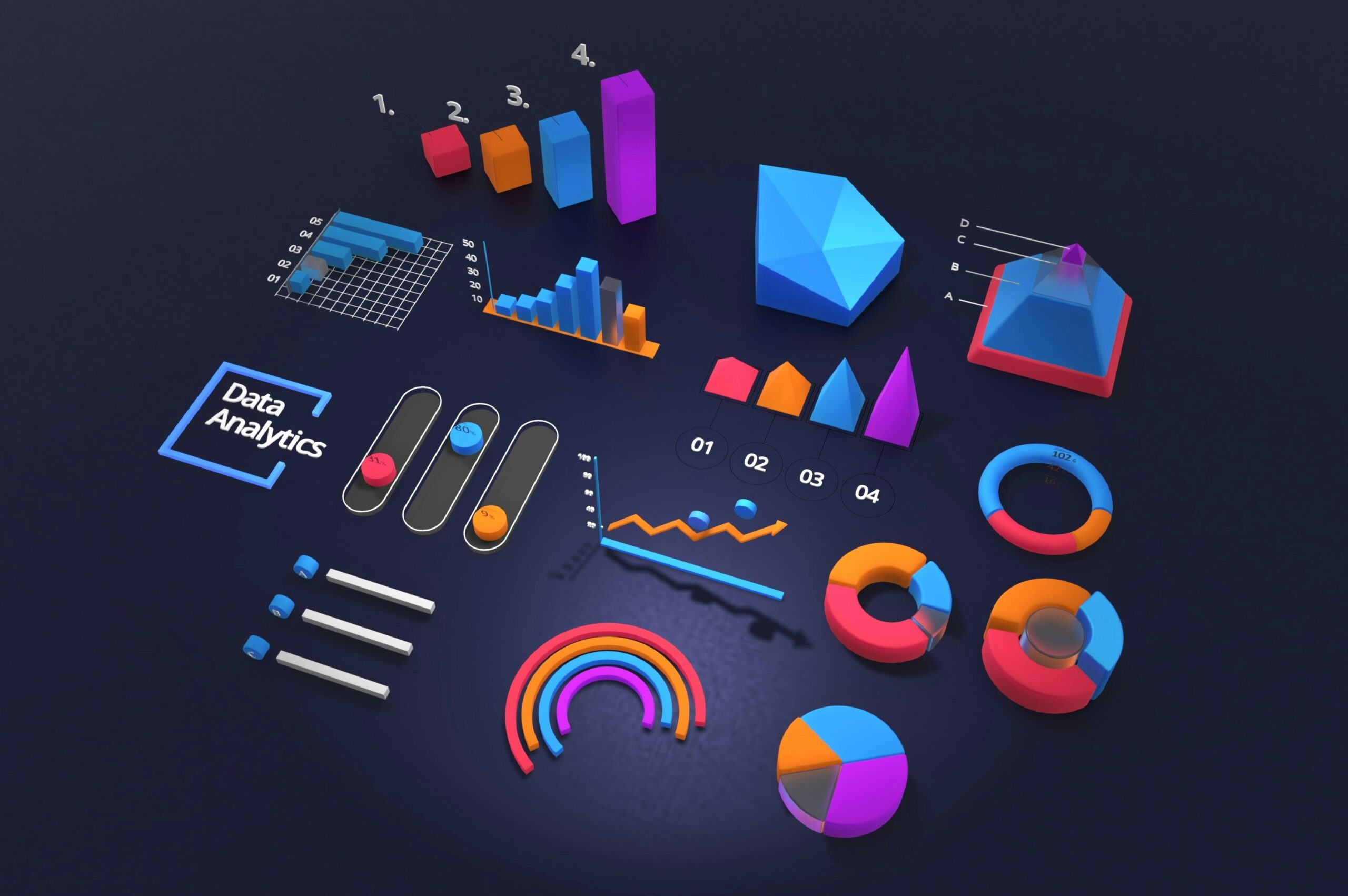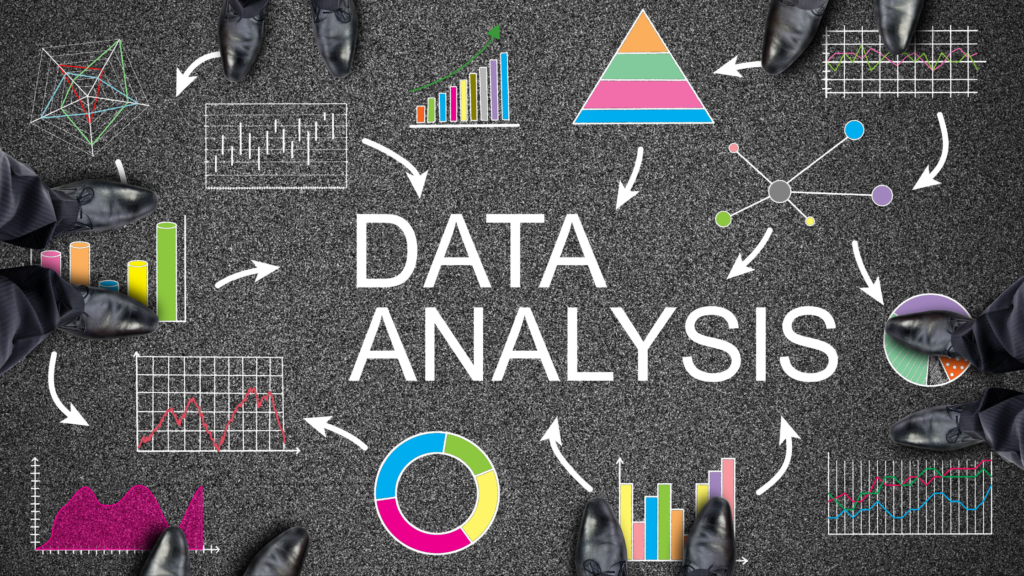Table of Contents
Unlocking Business Growth with AI
In this edition, we will explore the key trends in AI-driven business analytics, how AI improves predictive analytics, and how companies can overcome challenges to fully unlock AI’s potential.
Artificial Intelligence (AI) is rapidly changing how businesses understand their data and make decisions. From automating data tasks to predicting future trends, AI-powered analytics helps organizations move faster, work smarter, and stay ahead of the competition. However, while the benefits are immense, businesses also face challenges such as data privacy, system integration, and the need for skilled professionals.
Key Trends in AI-Powered Business Analytics
AI is helping businesses turn raw data into smart, actionable insights. Artificial intelligence is revolutionizing business analytics by automating complex processes, enhancing predictive capabilities, and enabling real-time decision-making. Organizations are increasingly integrating AI across multiple functions, leading to more efficient operations and competitive advantages. This transformation is fostering a data-driven culture where insights are more accessible, empowering businesses to respond swiftly to market changes. Here are some major trends shaping this transformation:
- Automated Data Processing: AI algorithms now handle data cleaning, sorting, and analysis with minimal human input. This speeds up the time it takes to generate insights and reduces human error.
- Predictive Analytics: By learning from historical data, machine learning models can forecast future outcomes—such as customer behavior, sales trends, or operational needs—giving businesses a clear competitive edge.
- Natural Language Processing (NLP): NLP enables AI systems to understand unstructured text, like social media comments or product reviews. This helps businesses gauge customer sentiment and spot new market trends.
- Advanced Data Visualization: AI tools detect hidden patterns and correlations in data and present them through interactive dashboards, helping decision-makers understand complex information easily.
- Real-Time Analytics: More businesses are using AI to analyze data as it happens. This enables faster decisions in fast-moving environments, such as e-commerce or logistics.
Opportunities for Businesses Using AI
Artificial Intelligence (AI) is revolutionizing the business landscape, offering companies innovative ways to enhance operations, personalize customer experiences, and drive growth. By leveraging AI technologies, businesses can automate routine tasks, gain deeper insights through data analysis, and develop new products and services.
Embracing AI not only boosts efficiency but also opens doors to new market opportunities and competitive advantages. When applied effectively, AI creates numerous opportunities for business growth:
- Smarter Decision-Making: With accurate predictions and in-depth insights, leaders can make well-informed decisions.
- Personalized Customer Experience: AI tailors services to individual customer preferences, leading to better satisfaction and loyalty.
- Greater Efficiency: AI highlights inefficiencies in operations, helping companies reduce waste and cut costs.
- Competitive Advantage: Early adopters of AI can adapt faster to change and outperform competitors.
AI’s Role in Predictive Analytics
Artificial Intelligence (AI) significantly enhances predictive analytics by processing vast datasets to identify complex patterns and trends. This capability allows businesses to anticipate future outcomes with greater accuracy, leading to more informed decision-making and strategic planning.
By integrating AI into predictive models, companies can optimize operations, personalize customer experiences, and gain a competitive edge in the market. Predictive analytics uses historical data to forecast the future—and AI takes this to the next level. Here’s how AI enhances forecasting and decision-making:
Advanced Data Handling
AI can process large volumes of structured and unstructured data, ensuring more reliable results. It also automatically corrects data errors to improve quality.
- Machine Learning Model Optimization: AI selects the best algorithms for each task and fine-tunes model settings (called hyperparameters) for top performance.
- Real-Time Predictions: AI constantly learns from new data, updating predictions in real-time to keep businesses one step ahead of change.
- Interpretability and Trust: New tools like SHAP and LIME make AI models more transparent, so stakeholders understand how predictions are made.
- Automation: AI can generate automated reports and alerts, reducing the need for manual oversight while increasing efficiency.
Challenges Businesses Face with AI Adoption
Adopting artificial intelligence (AI) presents businesses with several challenges, including bridging the skills gap, addressing employee concerns about job displacement, and integrating AI into existing systems. Overcoming these obstacles requires strategic planning, investment in training, and fostering a culture that views AI as a tool to augment human capabilities. Companies must be prepared to face and overcome these challenges:
Data Privacy and Security
AI relies on large datasets, some of which contain personal or sensitive information. Poor data handling can lead to breaches or legal issues.
Skills Shortage
Building and managing AI systems requires trained professionals. Without the right skills, businesses can’t realize AI’s full value.
Integration with Existing Systems
Many businesses still use legacy systems that aren’t built for AI. Integrating modern AI tools with these systems can be complex and expensive.
Ethical and Compliance Risks
Companies must ensure that AI usage follows ethical guidelines and complies with regulations like GDPR.
Trust and Transparency
Many AI systems operate as “black boxes,” making it hard for users to understand or trust their decisions without proper explainability tools.
Addressing Integration and Privacy Challenges
Integrating AI Tools with Existing Systems
Many older systems aren’t compatible with modern AI platforms. Challenges include data silos, poor data quality, and lack of real-time processing. Solutions include:
- Upgrading IT infrastructure
- Using cloud-based platforms
- Standardizing data formats
- Breaking down data silos with centralized data warehouses
Managing Privacy and Security Risks
AI tools must handle data responsibly. Businesses can mitigate risks by:
- Implementing strong data governance policies
- Using encryption and anonymization
- Ensuring model transparency
- Regularly auditing AI systems for bias or errors
How AI Helps Identify and Fix Operational Inefficiencies
AI helps businesses find weak spots in their operations and suggests better ways to work:
- Pattern Recognition: AI finds hidden inefficiencies in workflows and operations by analyzing data.
- Predictive Maintenance: AI predicts equipment failures before they happen, reducing downtime and repair costs.
- Workflow Automation: Repetitive tasks like scheduling or reporting can be automated to save time.
- Real-Time Monitoring: AI tracks processes as they happen, flagging issues immediately so they can be fixed fast.
Conclusion
AI-powered business analytics is reshaping how companies operate, from strategy to customer service. By automating data processing, enhancing forecasting, and offering real-time insights, AI enables smarter, faster decisions. However, success depends on how well businesses address integration, data quality, and privacy concerns.
Organizations that proactively invest in AI, modernize their infrastructure, and train their workforce will be best positioned to harness its full potential—turning complex data into meaningful, competitive insights.
PS: Please join our community on LinkedIn




What¦s Going down i am new to this, I stumbled upon this I’ve discovered It positively useful and it has aided me out loads. I hope to contribute & aid other customers like its aided me. Great job.
It’s really a nice and helpful piece of info. I am glad that you shared this useful information with us. Please keep us up to date like this. Thanks for sharing.
I was looking at some of your content on this site and I think this website is very instructive! Continue posting.